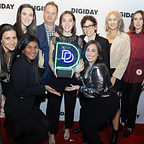What is the Public Domain? How Your Brand Can Use It To Tap Into Culture
By: Amanda Álvarez, Senior Account Supervisor, Digital & Blake Lynch, Digital Supervisor, Content Manager
If you’re wondering what the Public Domain is, you’re not alone. In the world of copyrighting, all creative and intellectual property is restricted for use by anyone, other than the owner of said copyright. The phrase “public domain” is commonly used to refer to content that is no longer protected by copyright law.
According to the 1998 Sonny Bono Copyright Term Extension Act in the United States, works created on or after January 1, 1978, the term of copyright is the life of the author plus seventy years after the author’s death. If the work is a joint work with multiple authors, the term lasts for seventy years after the last surviving author’s death. For works made for hire and anonymous or pseudonymous works, the duration of copyright is 95 years from publication or 120 years from creation, whichever is shorter.
For works created before January 1, 1978, that were not published or registered as of that date, the term of copyright is generally the same as for works created on or after January 1, 1978.1
For example, the original Winnie the Pooh storybook by A.A. Milne has been under copyright protection since 1926, the year it was published. This means that only A.A. Milne and his estate could use the characters from the book — including Pooh Bear, Eeyore, Rabbit, Piglet, Kanga, Roo, Owl, and Christopher Robin* — as well as the plot, dialogue, and settings from the book. In 1961, Disney purchased these rights from the beneficiaries of A.A. Milne, making them the sole owners of the original story and its characters, until the expiration of that copyright. And that’s exactly what happened on January 1, 2022, widely known as Public Domain Day. For the first time since its publishing in 1926, Winnie the Pooh and its copyright contemporaries joined a host of work published before 1922 already in the public domain.
With over 130 years of works now in the public domain and no exhaustive list of public domain works, it can be overwhelming to know exactly what is eligible for use. However, the most reliable place to get information on the current copyright status and ownership is the United States Copyright Office of Copyright Public Records. The Copyright Public Records office offers two ways to search for copyright registrations: A free online search portal for general registration information and a $200 deep dive search and certification service. Depending on the area of your creative interest in the public domain there are also some 3rd party sites that also track specific areas of work like TVTropes, Fandom, and Duke’s Center for the Study of the Public Domain.
Now that the pause on content entering the public domain has been lifted, new additions will be made yearly as copyrights continue to expire. For marketers, this means, each year there are new opportunities to inspire and integrate into creative campaigns. Presenting a great opportunity to leverage the existing equity of public domain works to tap into fan nostalgia and build new experiences with familiar things.
A simple way to make use of public domain content is to simply re-use the original content in its own brand storytelling.
A recent example focuses on our dear friend Winnie the Pooh, who is instead referred to by Mint Mobile as Winnie-the-Screwed. In this refreshed take on Winnie, Mint Mobile tells the story of a bear with a giant wireless phone bill, who just wants to hold onto his hard-earned cash. The narrator, Ryan Reynolds, reads that Winnie believes this is his only cell phone provider option, but that’s because he doesn’t yet know about Mint Mobile. — that is, until Christopher Robin tells Winnie that “from now until Midnight, new users can get three free months of Mint Mobile.
This remix is straightforward, uses the publicly original story and characters to advertise its promotion for new users. With new works added to the public domain each year, brands have a plethora of content to use for their own brand content.
Your brand doesn’t have to reimagine public domain works on its own. Brands can also:
- Include consumers in the creation process
- Build interactive campaigns that allow consumers to immerse themselves in a familiar feeling remixed with your brand
Who doesn’t want the chance to put their own spin on a nostalgic blast from the past?
Works in the public domain range include literary, dramatic, musical, and artistic works with so many options for inspiration it’s a great resource to consider when building new campaigns. Consumers love a nostalgic reference and new experience. Give it to them. Lean into the fact that works in the public domain are available to you to remix and reiterpret. A copyright is no longer blocking your team’s creativity– well for most works published before 1925.
*This does not include Tigger, who was created by Disney later and whose copyright has yet to expire.
